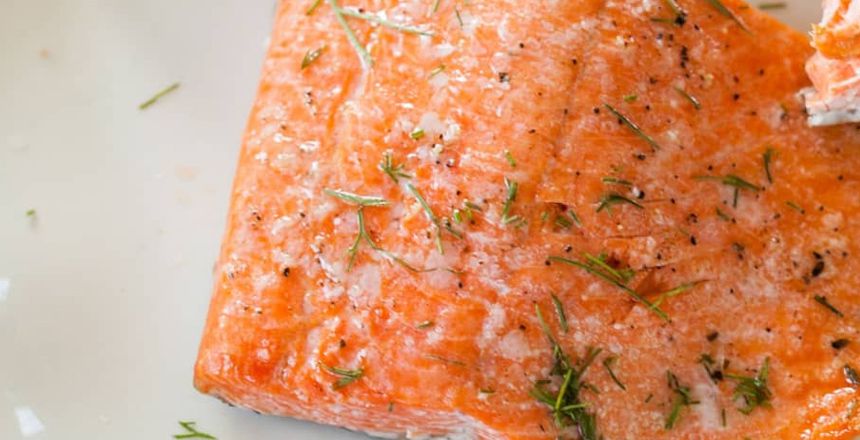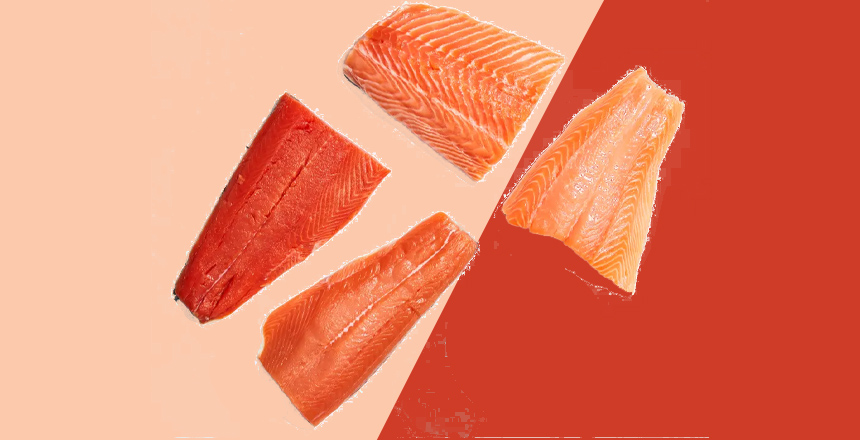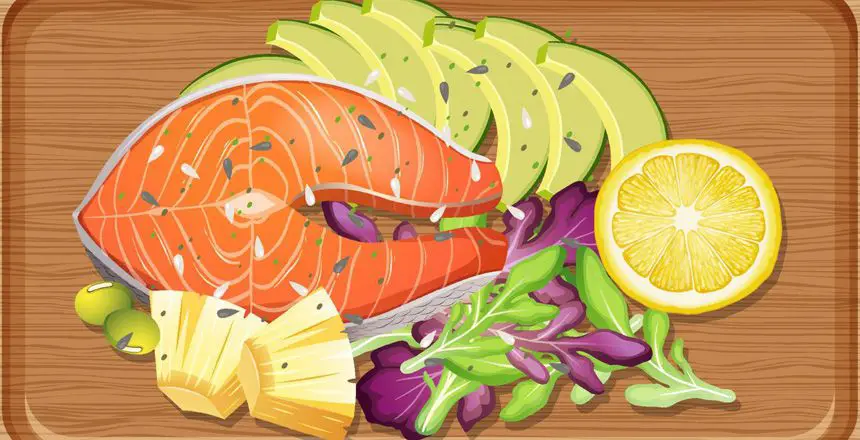If you’re planning to make salmon for dinner, but are feeling overwhelmed with the process of cooking it, we have good news – it doesn’t need to be complicated! Baking salmon is a simple way to get perfectly cooked fish in just minutes. It’s also one of the healthiest methods of preparing fish, as oven-baked salmon will retain its natural moisture and flavor while keeping calories low.
We’ll explain every detail on how long to bake salmon at 425°F so you can ensure your meal turns out perfect every time. So grab your ingredients and heat up that oven – let’s dive right in!
Related:
- How Long To Bake Salmon At 400°F
- How Long To Bake Salmon At 350
- How To Cook Salmon In The Oven
- Is Smoked Salmon Cooked Or Raw
- How Long Does Salmon Last In The Fridge
The Time it Takes To Bake Salmon At 425?

Salmon is an appetizing and nutritious fish that can be enjoyed in a variety of ways. Baked salmon at 425°F is one of the most popular methods for preparing this succulent fish. But how much time should you bake it? The answer depends on the size and thickness of your filet.
- For a 1-inch thick piece of salmon, bake it on the stove set to 425°F for 12-15 minutes.
- If your filet is more than 1 inch thick, increase baking time by 4-5 minutes per ½ inch of additional thickness.
To get an even better idea of doneness, use a digital thermometer to check the internal temperature – fully cooked salmon will register 145°F when inserted into the center. So whether you’re serving up a meal for one or feeding a crowd, make sure to adjust your baking time accordingly and enjoy the delicious results.
What Type Of Salmon Should I Use For Baking?

When it comes to oven-baked salmon, you’ve got plenty of options.
- King salmon, also known as Chinook salmon, is a popular choice due to its rich and buttery flavor.
- Coho salmon, on the other hand, has a milder taste and is slightly firmer in texture, making it a great option for those who prefer a lighter flavor profile.
- Sockeye salmon is another option that is rich in flavor and color, and is commonly used in smoked salmon dishes.
- Atlantic salmon, the most commonly available type in the US, has a mild flavor and is well-suited for baking due to its firm texture.
No matter which type of salmon you choose, be sure to buy wild-caught if possible as it is more sustainable and has a higher nutritional content than its farmed counterparts.
A Step To Step Guidance For Baking Salmon At 425
Baking salmon at 425 degrees might sound like a daunting task, but with our step-by-step guidance, you’ll be a pro in no time!
- Line your baking tray with parchment paper to avoid any sticking.
- Season your salmon with a pinch of salt and black pepper, along with any other herbs or spices you desire.
- Place your salmon skin-side down on the tray and drizzle some olive oil over it.
- Pop it in the oven which has been preheated for 12-15 minutes until the flesh is firm to the touch.
- Take it out of the oven, let it rest for a few minutes, and voila! You now have a perfectly cooked salmon dish ready to be served!
To add some more flavor to your dish, you can consider serving with some side dishes. Some of our favorites include asparagus, roasted potatoes, quinoa, or wild rice. You could also pair it with a fresh salad or some sautéed vegetables for an even healthier meal! If you’re feeling extra fancy, top your filet off with a few slices of lemon or freshly chopped herbs to make it look restaurant-worthy!
How To Cook Salmon At 350 Using An Air Fryer?
If you’re looking for a low-calorie and healthy alternative to baking, consider using an air fryer instead! Air frying is the perfect way to get restaurant-quality crispiness without all of the added fat.
To cook salmon in an air fryer, start by spicing up your filet with a pinch of salt and pepper. Spray some cooking spray into the air fryer basket and place your salmon skin-side down on it. Set your air fryer temperature to 350°F and cook place the salmon in the air fryer basket skin-side down, and cook for 10-12 minutes depending on the thickness of the filet. If you want a crispy skin, flip the filet halfway through cooking.
When the salmon is done, the flesh should be opaque and flaky. Serve with some freshly chopped herbs or a dollop of yogurt sauce for a delicious meal!
How To Store Baked Salmon?
If you’re a fan of salmon, then you know how delicious it can be. However, storing it can be a bit of a challenge, especially if you want to keep it as fresh as possible for as long as possible. Here are some tips on how to store cooked salmon:
Firstly, place the cooked salmon in an airtight container or wrap it in plastic wrap. Make sure to remove any bones or skin before storing it.
Next, refrigerate the salmon immediately. It’s best to store it in the coldest part of your fridge, which is usually around 32 degrees Fahrenheit. You can keep it in the fridge for up to three days.
If you want to store it for longer, you can freeze it. To do this, wrap it tightly in plastic wrap and place it in a freezer-safe container. It will keep in the freezer for up to two months.
When you’re ready to eat the salmon, allow it to thaw completely in the fridge before reheating it. You can reheat it in the oven, on the stove, or in the microwave.
By following these tips, you can prolong your salmon longevity while keep it fresh and tasty for the next serving
What To Avoid While Baking Salmon?
Baking salmon is a delicious and healthy way to incorporate seafood into your diet. However, it’s important to be mindful of what not to do when preparing this tasty fish. Here are a few key things to avoid when baking salmon:
- Overcooking: avoid leaving the fish in the oven for too long, as it can dry out and lose all its flavor.
- Adding too many spices: while seasoning is important for flavor, it’s best to keep it simple to let the natural taste of the fish shine through.
- Using too much oil: adding too much oil can result in a greasy finished product.
- Ignoring the bones: be sure to remove any remaining bones before serving, as they can be a choking hazard. By avoiding these common mistakes, you’ll have a delicious and perfectly cooked piece of salmon every time.
FAQs
Is 425 Too High To Bake Salmon?
While baking salmon at 425°F is a great way to get evenly cooked and moist fish, the high temperature can cause it to dry out quickly. The best way to ensure your salmon doesn’t burn is to check it regularly and remove it from the oven when done.
Is It Better To Cook Salmon At 400 Or 425?
It depends on your preference. If you’re looking for a quick and simple method of cooking, then baking salmon at 425°F may be the way to go. However, if you’d like to ensure maximum flavor and moistness, then cooking salmon at 400°F is the best option. Additionally, if you’re using an air fryer, then 350°F is the recommended temperature.
Click here to read more about “How long to bake salmon at 400?”
Is It Better To Cook Salmon On High Or Low Heat?
The best way to cook salmon is on medium-high heat. High heat will help the fish cook evenly, while low heat will allow it to retain its natural juices and moisture. It’s best to avoid cooking salmon on high for extended periods of time as this could lead to it becoming dry and tough.
How Do You Not Overcook Salmon On the Stove?
To avoid overcooking salmon on the stove, it’s important to check the internal temperature of the fish with an instant-read thermometer. Once the internal temperature reaches 145°F, it’s safe to remove from heat and enjoy your perfectly cooked salmon.
Should I Eat Salmon Skin?
Salmon skin is edible and can be enjoyed as long as it’s cooked properly. If you enjoy the taste of salmon skin, it’s best to bake or pan-sear the fish with its skin on to ensure maximum flavor and texture.
Conclusion
To wrap up, baking and preparing salmon at 425° can be a delicious, lemon-infused dinner addition if it is done correctly. Just remember the golden rule: hot oven and short time equals perfect salmon!
Now that you know how long to bake salmon at this temperature, you’ll be able to prepare an appealing meal every single time. Even when you are not a master chef in the kitchen, with this guide you’ll feel like one!


